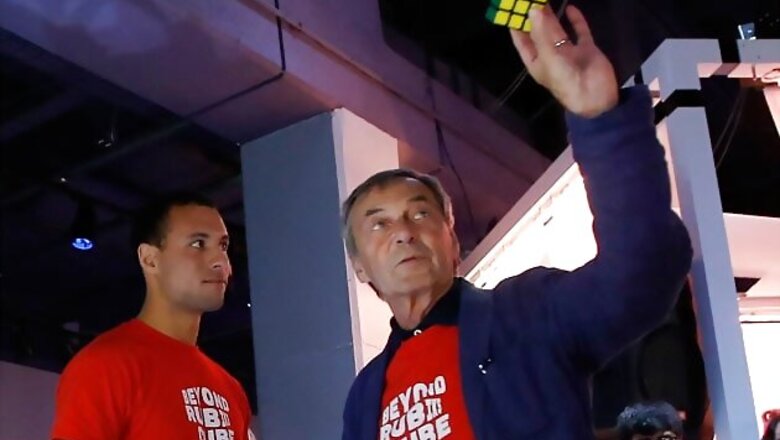
views
New Delhi: If you gave up trying to crack the Rubik's Cube a long time ago, why not make another attempt with Google's digital version of the immensely popular 3D combination puzzle posted as a doodle on the 40th anniversary of its invention?
In 1974, while a young professor of architecture in Budapest, Hungary, Erno Rubik created an innovative solid cube that twisted and turned but did not break or fall apart.
The first model was used to help him explain spatial relationships to his students. With colourful stickers on its sides, the cube got scrambled and thus emerged as the first 'Rubik's Cube.'
It took well over a month for Rubik to work out the solution to his puzzle. Designed primarily as a mobile sculpture symbolising the stark contrasts of the human condition-bewildering problems and triumphant intelligence, simplicity and complexity, stability and dynamism, order and chaos-it ended up becoming the world's best-selling toy ever.
The original Rubik's Cube - which won "toy of the year" in Britain in 1980 - is plastic, with nine coloured squares on each face.
The object is to move the pieces around until each side of the cube is a solid colour.
"Most of my adult life I spent with the cube because I was only 30 (years old) when I created it. And right now, after 40 years I can say: 'I know the cube, I know what happened around the cube,'" Rubik said in an interview to Reuters.
There are many forms of the cube on show - from the first simple wooden prototypes to a bejewelled version worth $2.5 million.
The first Rubik's world championship was held in 1982 in Budapest, Hungary, where the winner solved the cube in 22.95 seconds. The record for the fastest solving a Rubik's Cube is held by a robot.
The CUBESTORMER 3 robot, running on ARM processor, smashed the Guinness World Record title for solving a Rubik's Cube, recording a time of 3.253 seconds at the Big Bang Fair in Birmingham, UK in March this year.####
















Comments
0 comment